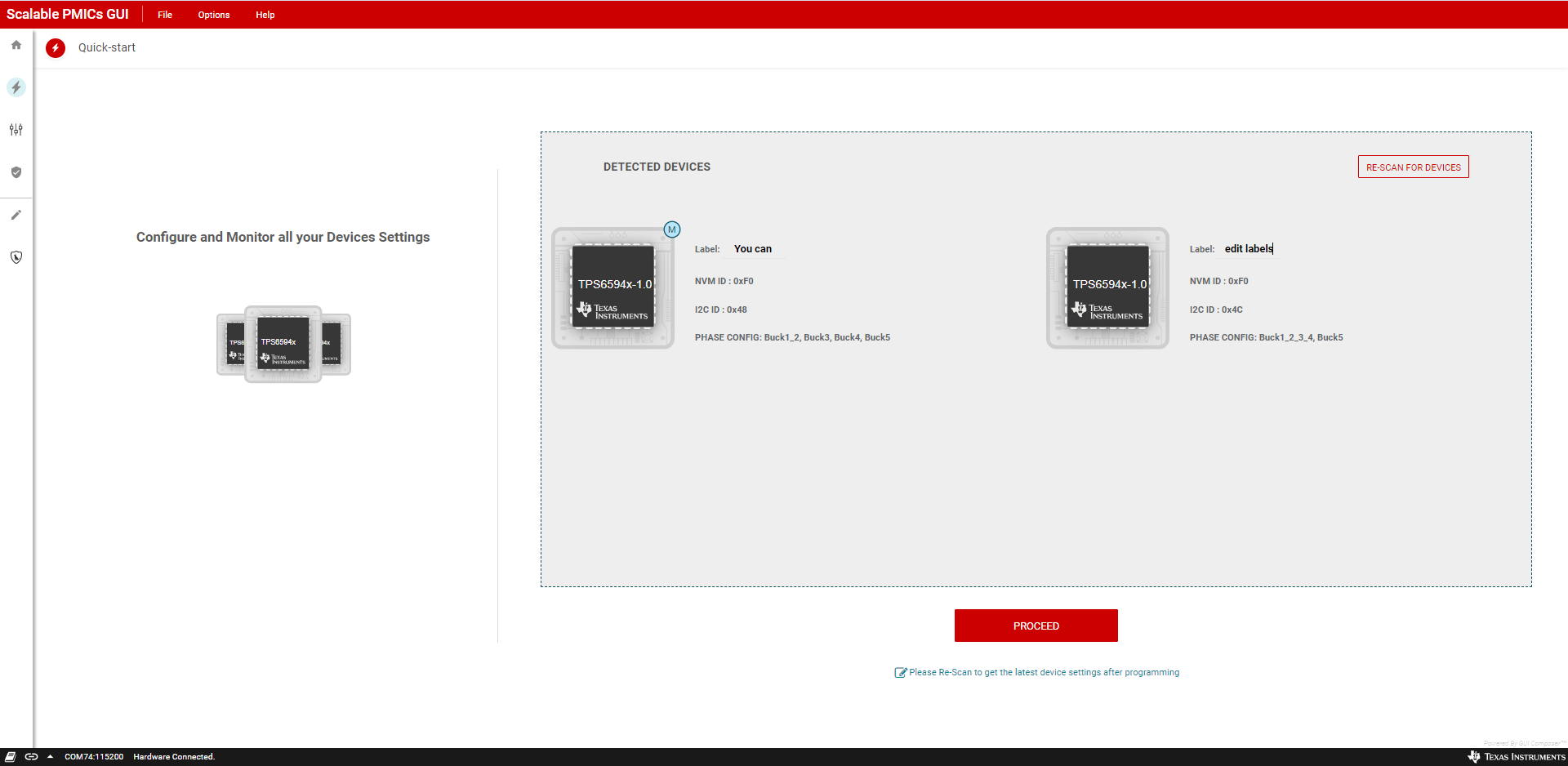SLVUBT8B November 2020 – June 2022 LP8764-Q1 , TPS6594-Q1
- Scalable PMIC's GUI User’s Guide
- Trademarks
- 1 Introduction
- 2 Supported Features
- 3 Revisions
- 4 Overview
- 5 Getting Started
- 6 Quick-start Page
- 7 Register Map Page
- 8 NVM Configuration Page
- 9 NVM Validation Page
- 10Watchdog Page
- 11Additional Resources
- 12Appendix A: Troubleshooting
- 13Appendix B: Advanced Topics
- 14Appendix C: Known Limitations
- 15Appendix D: Migration Topics
- 16Revision History
6.1 Device Scan Results
Figure 6-2 shows, for this example, two PMICs are detected. One PMIC is configured as the primary, denoted with the M in the blue circle, and the other as the secondary. Additional information regarding the BUCK phase configuration and the I2C ID of each device is indicated. The device label is an editable field and can be updated to provide a custom naming convention. By clicking the Proceed button, the quick-start page will advance to the interface window where select device registers can be written or read.
 Figure 6-2 Quick-start Scan Page Results
Figure 6-2 Quick-start Scan Page Results